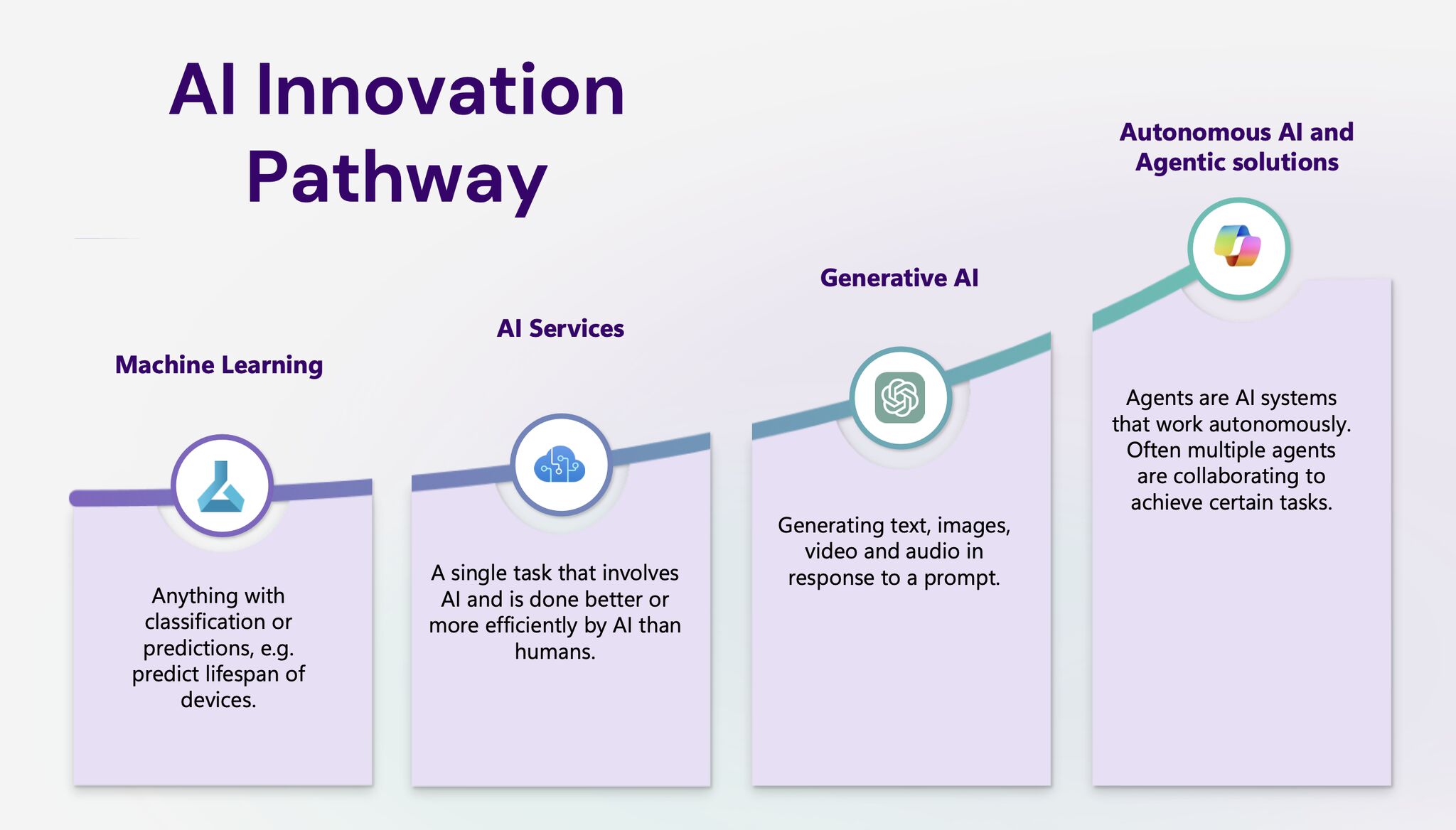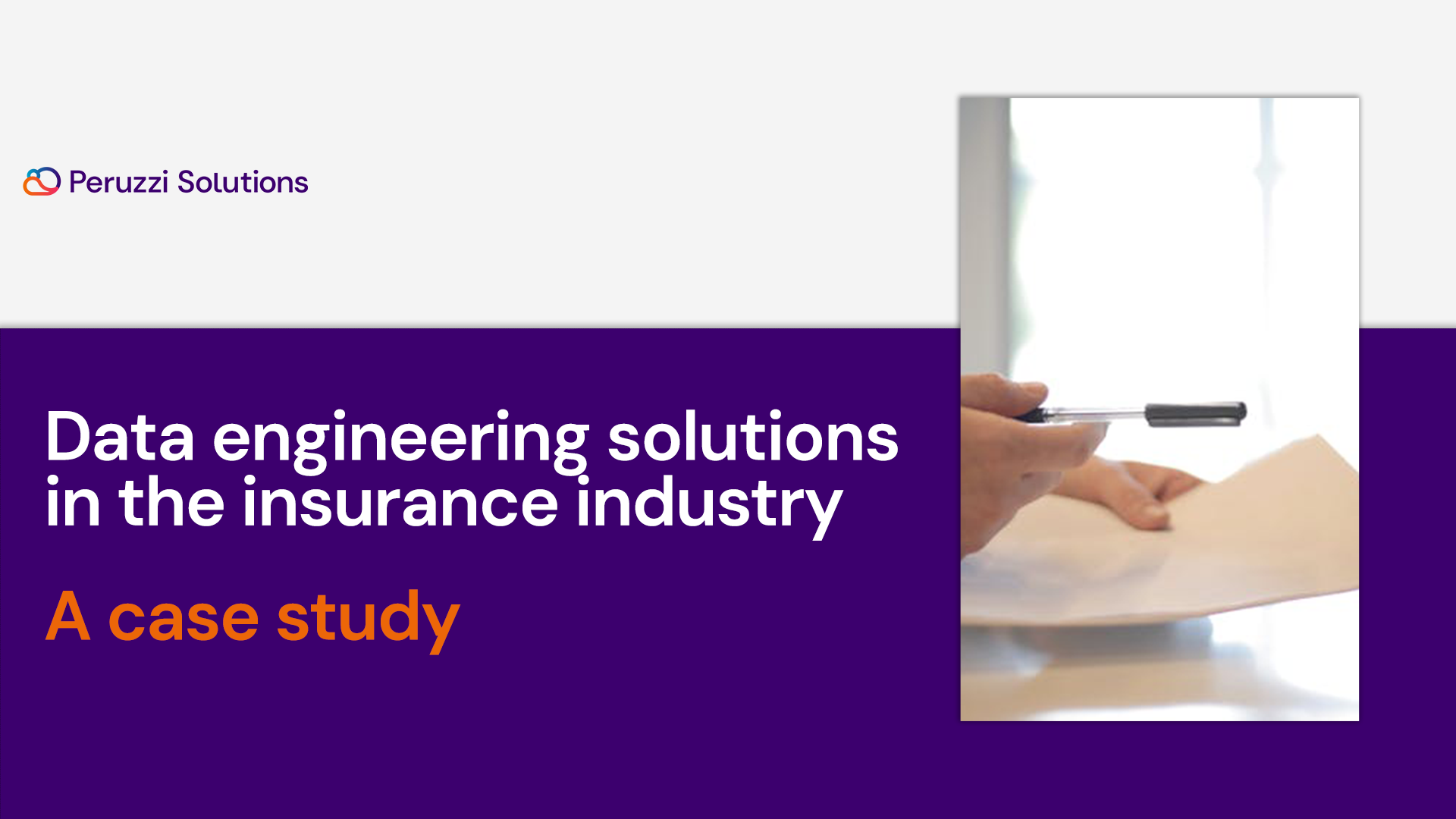AI has completely shifted the way we think, work, or even talk about our personal issues. ChatGPT is not only writing and reviewing codes or replaces Google Search, but acts as a friend, supporter or even a therapist. We are not exaggerating if we dare to say: AI is the biggest revolution of recent years - and we’re absolutely here for it. From personalised recommendations to automated workflows and tools like ChatGPT, AI has become part of everyday life for millions of people. But here’s the interesting thing: even though everyone uses AI, very few can clearly explain what AI actually is.
Is it one technology?
Is it a robot?
Is it ChatGPT?
Is it some mysterious system that “thinks” like a human?
But the truth is far simpler and far more exciting.
Artificial Intelligence isn’t just one tool or one system. It’s a continuum of technologies and capabilities that build on top of each other, each offering a new level of intelligence and automation. Whether you’re a business leader, a developer, or simply AI-curious, understanding these layers helps you make better decisions about what your team really needs. In this article, we break down the four major stages of AI, how each works, and when you should use them.
1. Machine Learning: The foundation of modern AI
Machine Learning (ML) is the bedrock of everything we now call AI. It’s not magic, it’s math. ML systems learn patterns from data and use those patterns to make predictions or classifications. For ML, you need a training data, which you “feed into” the ML model, so that it can use those patterns to make predictions in the test data.
At its core, ML works like this:
- You feed the system historical data (examples or training data).
- The model identifies patterns in that data.
- It uses these patterns to predict future outcomes.
For example:
- Predicting equipment failures before they happen
- Classifying customer reviews as positive or negative
- Forecasting sales for the next quarter
- Detecting anomalies in financial transactions
Machine learning doesn’t think, it calculates. Its power comes from identifying trends humans might miss across millions of data points.
When to use ML?
A team might need ML if they want to:
- Automate predictions
- Classify large volumes of data
- Replace manual rule-building
- Improve accuracy over time
Often, when businesses say “We need AI,” what they really need is a simple but powerful ML model.
2. AI services: Task-specific intelligence built on ML
As ML matured, companies began packaging these models into easy-to-use AI services. These are specialised tools designed to perform one task exceptionally well. These services don’t create new content or act autonomously. They simply execute a task better, faster, and more consistently than humans.
Examples of AI services (you probably use many of them):
- Translation services (Google Translate, DeepL)
- Vision systems that identify objects, scan documents, or detect defects
- Fraud detection algorithms in banking
- Speech-to-text engines
- Sentiment analysis tools for social media monitoring
These are still AI, but not the “chat with a robot” type. They’re purpose-built, efficient, and incredibly reliable.
When to use AI services?
You need AI services when:
- The task is repetitive
- You need speed at scale
- You want accuracy, not creativity
- You’re dealing with structured data or clear rules
Think of them as AI “modules” that plug into workflows to automate one specific thing.

3. Generative AI: The creative leap forward
If Machine Learning is analytical and AI services are functional, then Generative AI (GenAI) is creative.
This is the category that brought AI into the mainstream, what we think of when we talk about AI.
Generative AI can produce new content — text, images, videos, audio — based on patterns learned from massive datasets.
How does GenAI work?
GenAI models (like ChatGPT, Claude, or Midjourney) are trained on enormous amounts of data.
They learn:
- How language works
- How images are structured
- How styles differ across formats
- How humans communicate
Once trained, they can generate original content from a simple prompt.
Examples:
- Writing articles or emails
- Generating design ideas
- Creating artwork or branding
- Summarising documents
- Producing synthetic voices or videos
This leap from analysis to creation is why GenAI feels so transformative.
When to use Generative AI?
Teams benefit from GenAI when they want to:
- Speed up creative work
- Produce text or visuals at scale
- Draft documentation or code
- Brainstorm ideas
- Automate communication
But here’s the key insight:
Not every AI problem needs Generative AI.
In many cases, simple ML or task-specific AI services are more efficient, cheaper, and easier to integrate.
4. Autonomous & agentic AI: The tuture of intelligent systems
The next stage in AI evolution is autonomous AI: systems that don’t just follow commands but act independently to achieve goals. This is where AI agents come in.
Agents are AI systems that can:
- Plan
- Make decisions
- Coordinate actions
- Work with other agents
- Trigger workflows automatically
Think of them as digital team members that can manage an entire process end-to-end.
Examples of agentic AI:
- Agents that search thousands of tender portals daily and shortlist only relevant opportunities
- Sales agents that qualify leads automatically
- Research agents that gather, summarise, and compare data
- Support agents that solve customer issues without human intervention
This is not science fiction, as early versions are already here and rapidly improving.
When to use agentic AI?
These systems make sense when you need:
- Full workflow automation
- Multi-step processes handled without supervision
- AI that can collaborate across tools and data sources
It’s the most advanced form of AI, but it’s not always necessary. Most companies will reach this stage gradually, after building strong ML + GenAI foundations.
What does your team actually need?
This is the most important question, and the one most businesses answer incorrectly. Companies often say:
“We need AI.” But “AI” is broad. The real question is: Which level of AI solves your problem? Maybe you need a simple Machine Learning model. Maybe you need a single AI service. Maybe you need Generative AI for creative tasks. Or maybe you’re ready for full autonomous agents.
Understanding the difference helps you to spend smarter, implement faster, set realistic expectations, choose the right tool, and avoid over-engineering.
Most importantly, it ensures AI genuinely creates value instead of becoming yet another shiny experiment. In our previous article, we talked about which 3 questions to ask yourself before implementing AI in your business.
Key takeaways
Artificial Intelligence is not one thing. It’s an evolving landscape with multiple layers from basic prediction systems to creative tools to autonomous agents. Each layer has its role, its strengths, and its ideal use cases Whether you’re modernising internal processes, automating search and qualification tasks, or exploring new digital capabilities, clarity is your biggest advantage.
Before deciding what to build or adopt, step back and ask: Which stage of AI innovation does our problem actually require? Because when you choose the right level of AI, you don’t just adopt technology, you unlock real, measurable, and sustainable transformation.
